Stick Defense for Women in New York: The “Royal Cane” Fencing of Regis Senac, 1898
“Along the walls are trophies of combat—swords, formidable looking daggers and ‘royal canes.’ A dozen or more girls in slight, loose fitting gowns, the skirts a little below the knee, with dark boots, were about to begin their work…”
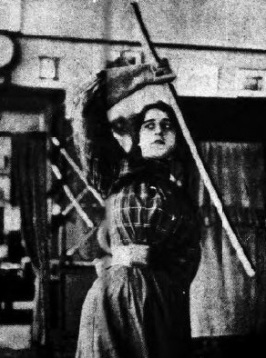 The following article appeared in the May Day, 1898 issue of the New York Herald, and describes a system of self-defense with the cane taught to the society women of New York City. In addition to showcasing the burgeoning American trend in self-defense instruction for women, the article offers a rare glimpse into the nineteenth century salle d’armes of noted New York City fencing master Regis Senac. Although Senac is not mentioned by name in the article, a number of details—such as the presence of fencing daggers, the mention of a son named Louis, the school’s Broadway location, and the system of “Royal Cane” (or Canne Royale) presented therein—all firmly establish the maitre d’armes described in this article to be none other than Regis Senac.
The following article appeared in the May Day, 1898 issue of the New York Herald, and describes a system of self-defense with the cane taught to the society women of New York City. In addition to showcasing the burgeoning American trend in self-defense instruction for women, the article offers a rare glimpse into the nineteenth century salle d’armes of noted New York City fencing master Regis Senac. Although Senac is not mentioned by name in the article, a number of details—such as the presence of fencing daggers, the mention of a son named Louis, the school’s Broadway location, and the system of “Royal Cane” (or Canne Royale) presented therein—all firmly establish the maitre d’armes described in this article to be none other than Regis Senac.

Regis and Louis Senec, gelatin on glass. Source: George Eastman House
NOW THE “ROYAL CANES.”
Young Women Perfecting Themselves in the Art of Self-Defence—They Use Stout Hickory Clubs.
New York Herald. Sunday, May 1, 1898.
It is several hundred years since the “royal canes,” as a special means of “defence,” appeared in France.
Naturally enough, it was one of the feminine members of a royal family who found a pair of the “canes” among the family relics, and became so bewitched by the grace and poises necessary to wield these dangerous looking weapons that she decided to learn to use them. It is probable that the young lady’s enthusiasm set half of the pretty girls of Paris, if not of all France, upon the “defence,” for almost immediately the young people of the inner circle of society began to exercise with the “royal canes” before crowds of admiring friends, and soon a school for training in the exercise was opened. From that time on the “canes” became popular. Here in New York it is esteemed as one of the most useful and beneficial exercises.
Most of our “royal caners” are under the direction of a well known fencing master. Many are young women holding brilliant social positions. The professor in question has a class of society matrons who are candidates for honors as “caners,” and are determined to become experts in the newest fad sent from over the ocean.
At the school the writer was recently permltted to be present during a class hour for the younger members. The classroom occupies the entire floor of a large Broadway building. The floors are carpetless and covered with oilcloth, and along the walls are trophies of combat—swords, formidable looking daggers and “royal canes.” A dozen or more girls in slight, loose fitting gowns, the skirts a little below the knee, with dark boots, were about to begin their work.
“Allons, ladees, commencez—von, two, dree!”
Monsieur and his son took position, each in the centre of a group of pupils. It seemed to me that the heavy hickory clubs were used in an unusually graceful manner, but Monsieur was not pleased.
“Allons, young ladees, more high with your arm—your elbow more in zan zat! Zat is ze way!”
 Suiting the action to the word, the Professor seized a club and swung it carelessly back and forth over and dangerously near to his head. ”Von, two! Sacre, mon! Zat’s bettare!”
Suiting the action to the word, the Professor seized a club and swung it carelessly back and forth over and dangerously near to his head. ”Von, two! Sacre, mon! Zat’s bettare!”
“On guard!” shouts M. Louis, the son, moving an unskilled arm over the head of its owner.
It was easy to see that the girls were beginners. They were afraid to go beyond a certain point. They feared an unexpected blow from a friendly club. Monsieur told them to be on hand the next morning. They returned to their homes to be oiled and massaged by attentive maids.
The exercise of the “royal canes” is not the easiest in the world to acquire. The novice is so afraid of hitting herself that she generally does manage to inflict slight injury either upon herself or another. But these petted daughters of society who have never endured a blow or a knock, what do they know of pain? They keenly enjoy the sensation of the blow and cheerfully endure their martyrdom.
In the classroom on the following morning the young ladies again took their positions.
“Ve must repeat ze first movement you have learned yesterday,” said the Professor. “Zat is good,” he cried. “Zou do sat with dis lady.” A little brunette, who seemed to be easy at handling the clubs, advanced quickly and stood in readiness opposite a tall, graceful blonde. “Salute!” called Monsieur.
“First, five times se wrist movement, Tres bien! Vne, two, dree.”
“Now. ladles, move guard—protect your right—face! Parry—vatch se point of ze opponent’s club—advance—vatch ze opponent—now—retreat quick—parry—allons—move quick, Von, two, dree! Deceive, pass under and parry on ze left. First position—sat is bettare!”
While the writer was present the grand salute was practised. The various positions are “tierce,” “carte,” “conde carte,” The manipulation of the long and heavy stick seems tiresome, but after the novice practises awhile the handling of the cane does not fatigue.
When the pupil is ready to “combat” she is considered very advanced in the exercise of “action and reaction,” as one pretty society girl calls it.
The Professor says it is very hard to drill a class of society women, because some have never developed their muscles and seem to be absolutely incapable of grasping the meaning of the exercises they are asked to perform. Others are quick to learn, and take such an interest in the study that it is a pleasure to teach them. A class of gentlemen, while not so large as that of the ladies, is somewhat more proficient.
For further reading, see the following articles:



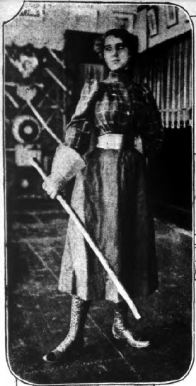
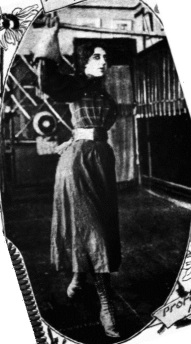
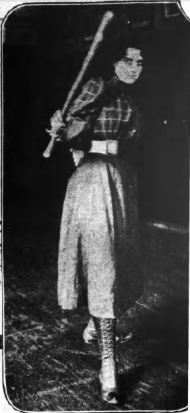
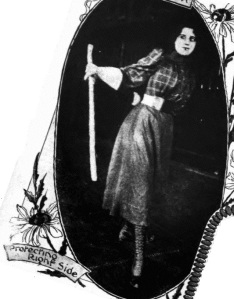


Trackbacks & Pingbacks